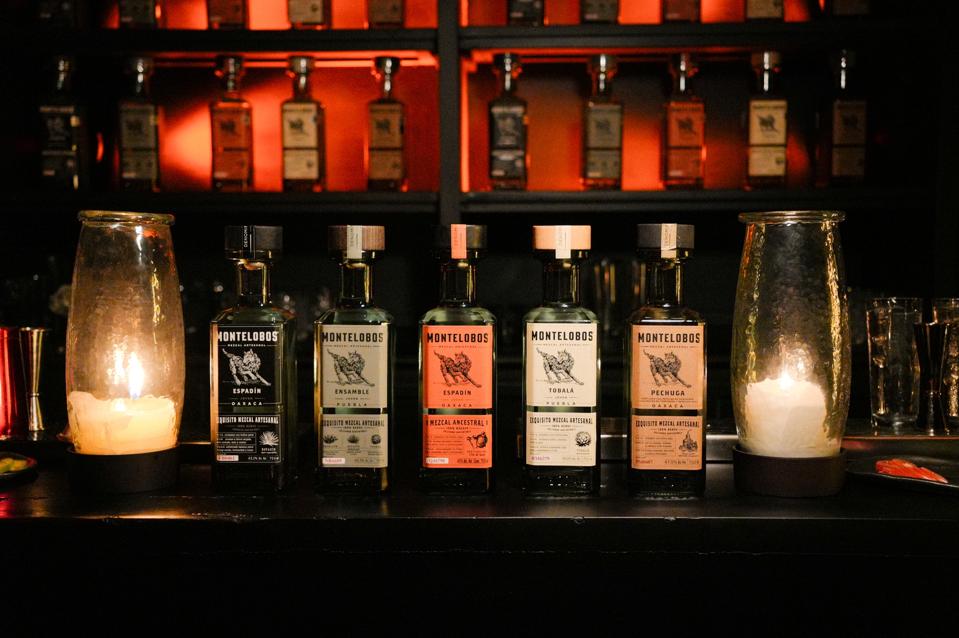As Cinco de Mayo approaches, many consumers will raise a glass of tequila or mezcal without realizing the centuries of tradition — and science — behind Mexico’s most celebrated spirits. For Iván Saldaña, founder of Montelobos Mezcal, understanding that history has been a lifelong pursuit.
Before he ever stepped into a distillery, Saldaña spent years studying the agave plant’s secrets — not as a distiller, but as a scientist.
“I spent a few years investigating agave,” Saldaña explains. “I did a PhD on plant and stress. I’m very fascinated by the biological solutions the plant had to apply in order to see through its evolutionary path in the desert.”
Though his background is in plant biochemistry, Saldaña’s journey eventually led him out of academia and into the spirits industry at a pivotal time for agave. When tequila production was expanding rapidly but knowledge about the agave plant was lacking, Saldaña was recruited by a major French spirits company to lead research and development.
Through this experience, he discovered an unexpected creative outlet. “I discovered that a lot of the knowledge I had gained earlier on, the chemistry of the agave, actually could translate into smells and flavors,” he says. “Science is always a very creative space, but not in the same way as you would do it as a master distiller.”
Ultimately, his passion for agave and desire to build something more personal led him to leave the corporate world. In partnership with Daniel Moy, Saldaña launched Montelobos — a brand rooted in science, tradition, and an uncompromising commitment to sustainability.
The Shifting Mezcal Market
Over the past decade, mezcal has experienced rapid growth, both in the United States and globally. But Saldaña notes that its evolution has not been uniform across markets.
“Mezcal has changed in Mexico for Mexicans, and mezcal has changed in the US for Americans,” he says. “Almost any relevant brand in the US has never been relevant in Mexico. Historically, that’s starting to change.”
Montelobos is a rare brand that found success early in both markets, something Saldaña attributes to its authenticity.
“We were building in both sides, trying to have a current story that was not made to charm the American bartender,” he says. “We were what we were, and we wanted to be understood by the American bartender.”
Today, the mezcal category is more diverse and mature. American consumers are more familiar with different expressions, and mezcalero families increasingly own and distribute their own brands. Meanwhile, European interest in mezcal is rising as well, aided by a cultural appreciation for origin-driven, artisanal products.
Why Mezcal Is Positioned for Continued Growth
Despite mezcal’s growing visibility, Saldaña is clear-eyed about its relative size compared to other spirits.
“We are three to four percent of what tequila is,” he says. “I think eventually this will become maybe 10% of what the tequila business is.”
He sees an opportunity for sustained growth, but emphasizes that the category’s long-term success will depend on addressing critical sustainability challenges.
“Plantations of agave will take seven years to grow,” he says. “When you are organic, that means you’ve been observed by third-party entities that come and look at how you are doing it.”
Montelobos has invested heavily in building its own organic agave supply chain. The company uses modern technologies like drone monitoring to track plant growth and only sources FSC-certified wood to reduce its environmental impact.
“All these things can be planned and foreseen,” Saldaña says. “It requires commitment, money, and a lot of hope that things are gonna go as planned.”
The Chemical Complexity of Mezcal
Saldaña believes mezcal’s intrinsic complexity is a key driver of its appeal.
“Maybe mezcal is the most complex spirit in there,” he says. “By chemically, it’s at least the most complex white spirit.”
While other spirits like gin achieve complexity by adding botanicals, mezcal’s richness comes entirely from a single ingredient — agave — and the traditional processes used to transform it.
“Agaves can produce up to 40 different turpines, essential oils that can be expressed,” he says. “Then you have to cook the piña, which generates a Maillard reaction, super complex. Add natural fermentation, add the smoke from the roasting process — you truly end up with something chemically ultra-complex.”
For Saldaña, every step in making mezcal connects back to millions of years of agave evolution — and centuries of tradition.
Advice for New Mezcal Drinkers
For those interested in exploring mezcal for the first time, Saldaña recommends starting with knowledge.
“If someone wants to get into mezcal, they’re going to get into the most complex spirit that exists,” he says. “First, read. Learn a little about mezcal, have a context.”
He recommends Montelobos as a great starting point — a spirit designed for sipping, not just mixing. He also suggests checking out resources like Anatomy of Mezcal, a short guide he wrote to introduce consumers to the production process and flavor profiles.
Beyond that, he says, it’s all about conscious tasting.
“You want to elevate yourself, you have to put your intention, your presence, into trying to understand what you’re tasting,” he says. “It’s an extraordinary experience. I’ve seen so many people almost become part of a cult after they start to taste mezcal.”
For Saldaña, mezcal’s future remains bright — and he’s committed to ensuring Montelobos continues to grow sustainably, authentically, and true to its roots.

